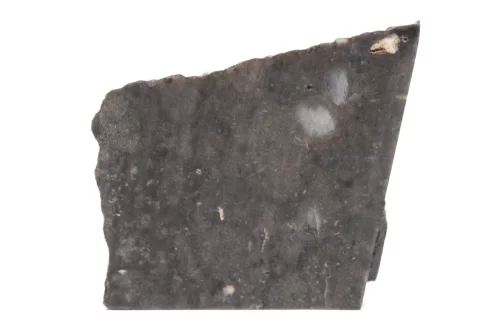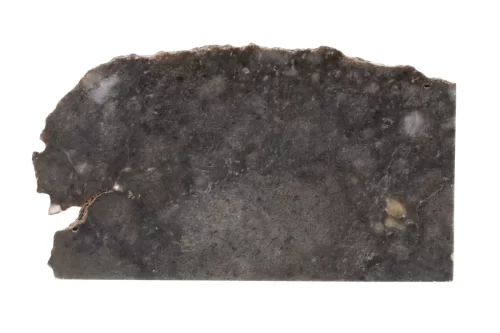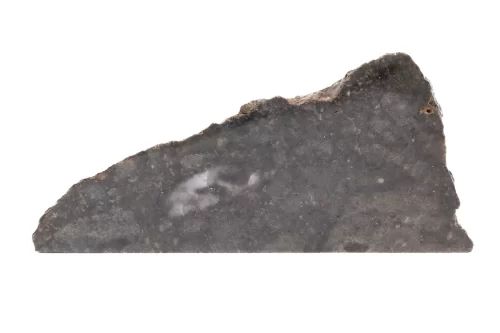Northwest Africa 14729
Lunar meteorite (melt breccia)
Found in Northwest Africa in 2021
How do we know these meteorites came from the Moon? Lunar meteorites like NWA 14729 have been tested by scientists and have been found to contain unique chemical and mineral characteristics specific to the Moon, mainly based on comparisons made between Apollo return samples to Earth rocks.
NASA’s Apollo missions and the USSR’s Luna missions both returned samples from the Moon’s surface. In 1970, Luna 16 (USSR) was the first mission to successfully return samples from beyond Earth. The robotic probe brought back 101 grams of lunar soil from a region on the Moon called Mare Fecunditatis. It took seven minutes of drilling for the probe to reach a depth of 35 centimeters, from which it collected its sample.
The Luna 16 soil was found to be similar to samples returned by Apollo 12, which were almost all basalts. The Apollo 12 samples included only two breccias.
How much are lunar meteorites worth? Famously, three samples weighing 0.2g of the Luna 16 were sold at auction for $442.500 in 1993. These fragments sold again, at auction, in 2018 for $855,000. However, meteorites are a little different. Remember, while it is illegal to own Apollo return samples, meteorites are very legal to own.
What is NWA 14729? NWA 14729 lunar meteorites were first purchased from a Moroccan dealer in 2021, and when studied were found to be lunar melt breccias. A breccia is a rock composed of fragments of older rocks that have all been broken apart and “glued” back together, likely during a collision. Specifically, melt breccias have veins of liquid impact melt that have been injected into the small spaces between rock fragments during an impact. This liquid quickly cools and forms glass.
Scientists have noticed that many times, tiny bubbles of gas are trapped in the liquid before it cools and solidifies. These bubbles are called vesicles, and are often seen in meteorites from the Moon. This is the case with NWA 14729. When sliced, the meteorite exhibits a matrix consisting of vesicular melt rock.
Showing all 4 results



